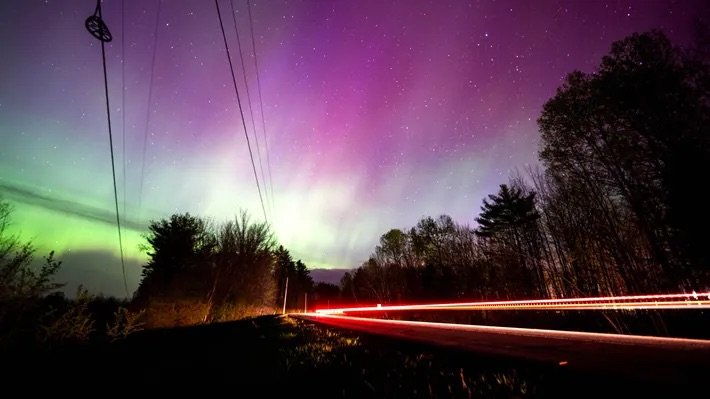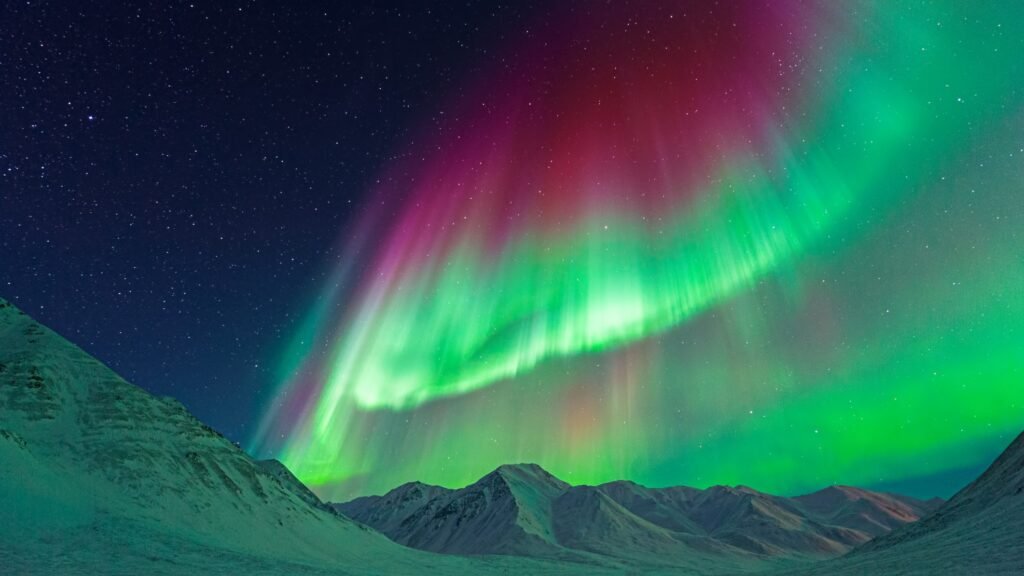June 2025 has delivered spectacular northern lights displays across the United States, with powerful geomagnetic storms creating rare aurora viewing opportunities as far south as Georgia and Alabama. NOAA’s Space Weather Prediction Center continues monitoring solar activity for upcoming aurora forecasts.
Recent Severe Geomagnetic Storm Activity
“Severe” geomagnetic storm levels were reached on Sunday, and millions of Americans across the nation – perhaps even as far as the Deep South – may have been treated to a rare display of the Northern Lights, according to NOAA’s Space Weather Prediction Center.
The recent activity stemmed from a “powerful coronal mass ejection (CME) erupted from the Sun,” the SWPC said Saturday, creating conditions for widespread aurora visibility across multiple U.S. states.

Northern Lights Visibility Across US States
Throughout early June 2025, northern lights forecasts have indicated visibility across an unusually large number of states. The northern lights are forecast to be visible from 15 states across the U.S. on Monday, June 2, with The National Oceanic and Atmospheric Administration (NOAA) predicts the display to be “quite pleasing to look at,” according to its Kp index scale measurement.
Earlier forecasts showed even broader visibility potential, with northern lights possibly visible in up to 23 US states on June 1. Alaska has the highest chance of seeing the northern lights tonight. If G3 or even G4 storm levels are reached, auroras could be visible at high-latitude states, including Michigan and Maine, according to NOAA.

Geomagnetic Storm Classifications and Impacts
The latest SWPC forecast states a G4 or severe geomagnetic storm watch is in effect for Monday, June 2, representing some of the strongest space weather activity in recent months. A G3 (strong) to G4 (severe) level geomagnetic storm is ongoing since early Sunday. The Space Weather Prediction Center’s most recent forecast (8:30 a.m. Eastern) is that these conditions will continue Sunday night through Monday morning.
The U.K. Met Office echoes this forecast, predicting moderate (G2) geomagnetic storms on June 13-14, with activity expected to decline to unsettled levels by June 15-16. These storms can shift the aurora oval farther south, allowing viewers at lower latitudes to witness the spectacular light displays.
Current and Upcoming Forecast Conditions
This could trigger G1–G2-class (Minor to Moderate) geomagnetic storms through midweek, with the best chances for aurora sightings in polar to high-latitude regions, especially in the Southern Hemisphere, where winter darkness offers prime viewing conditions.
For immediate viewing opportunities, Auroras may be visible from Alaska to Oregon as geomagnetic storm conditions start to wane. However, space weather conditions remain dynamic and can change rapidly based on solar activity.
Best Viewing Practices for Northern Lights
To maximize your chances of seeing the northern lights during active periods, find locations with minimal light pollution and clear northern horizons. The aurora typically appears as green curtains of light, though stronger storms can produce red, purple, and blue colors.
NOAA’s Space Weather Prediction Center provides real-time aurora forecasts through their experimental Aurora Dashboard, offering up-to-date predictions for aurora visibility across different geographic regions.
Conclusion
June 2025 has proven exceptional for northern lights enthusiasts, with severe geomagnetic storms creating unprecedented viewing opportunities across the continental United States. As solar maximum continues, aurora chasers should monitor NOAA’s Space Weather Prediction Center for ongoing forecasts and alerts about upcoming geomagnetic storm activity that could produce more spectacular northern lights displays.
